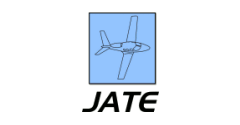Abstract
When operating under Visual Flight Rules, pilots primarily rely on visual scanning to avoid other aircraft and airborne collision threats. Records from the Federal Aviation Administration indicate that near encounters with unmanned aircraft are on the rise, reaching 1,761 reported unmanned aircraft system (UAS) sightings or near-misses in 2016. This study sought to assess the effectiveness of pilot visual detection of UAS platforms that were equipped with strobe lighting. A sample of 10 pilots flew a general aviation aircraft on a scripted series of five intercepts with a small UAS (sUAS) that was equipped with strobe lighting. Participants were asked to indicate when they visually detected the unmanned aircraft. Geolocation information for both the aircraft and sUAS platform was compared to assess visibility distance. Findings were used to evaluate the efficacy of daytime strobe lighting as a method to enhance pilot sUAS detection, visibility, and collision avoidance. Participants detected the unmanned aircraft during 7.7% of the intercepts. Due to a lack of data points, the authors were unable to conclusively determine if strobe lighting improved UAS visual detection. The authors recommend further research to explore the effectiveness of using sUAS-mounted strobe lights for nighttime visual detection.
Recommended Citation
Wallace, Ryan J.; Loffi, Jon M.; Vance, Samuel M.; Jacob, Jamey; Dunlap, Jared C.; and Mitchell, Taylor A.
(2018)
"Pilot Visual Detection of Small Unmanned Aircraft Systems (sUAS) Equipped with Strobe Lighting,"
Journal of Aviation Technology and Engineering:
Vol. 7:
Iss.
2, Article 5.
Available at: https://doi.org/10.7771/2159-6670.1177


